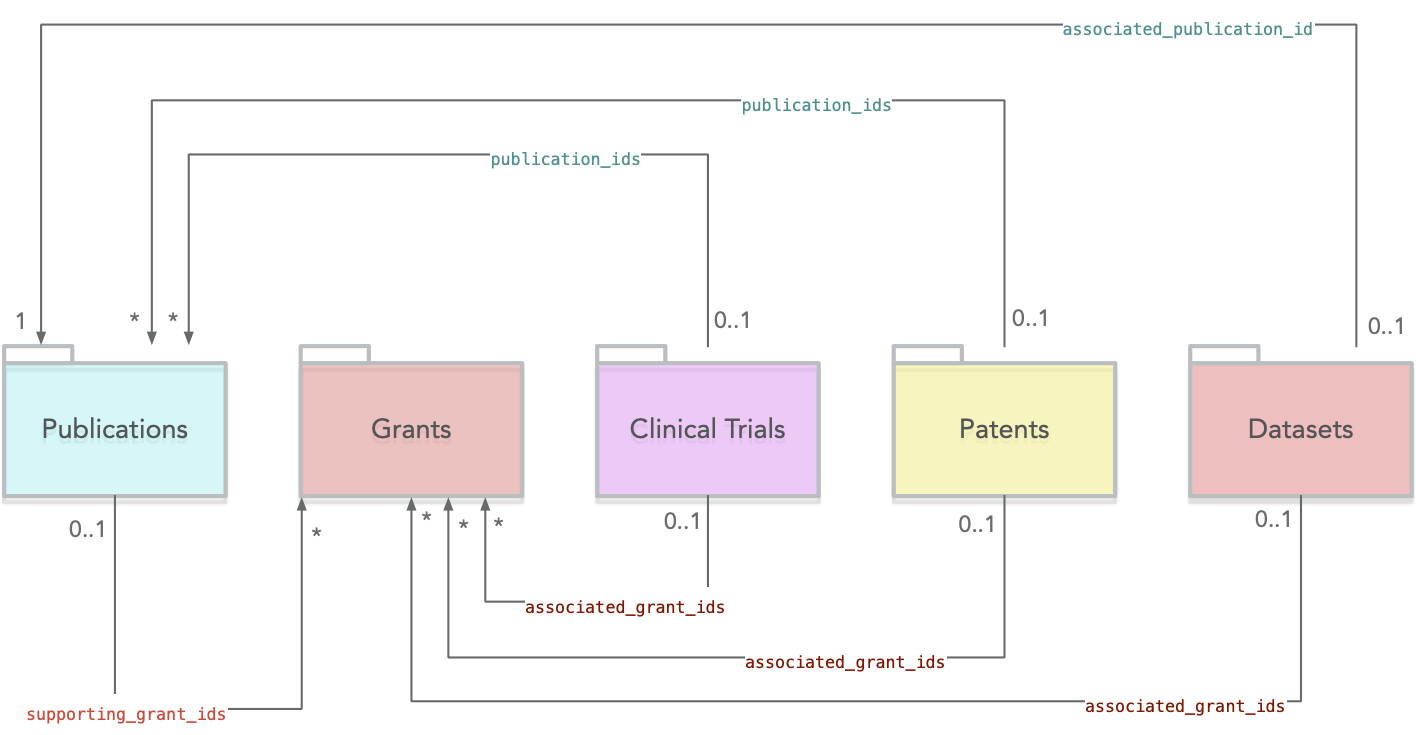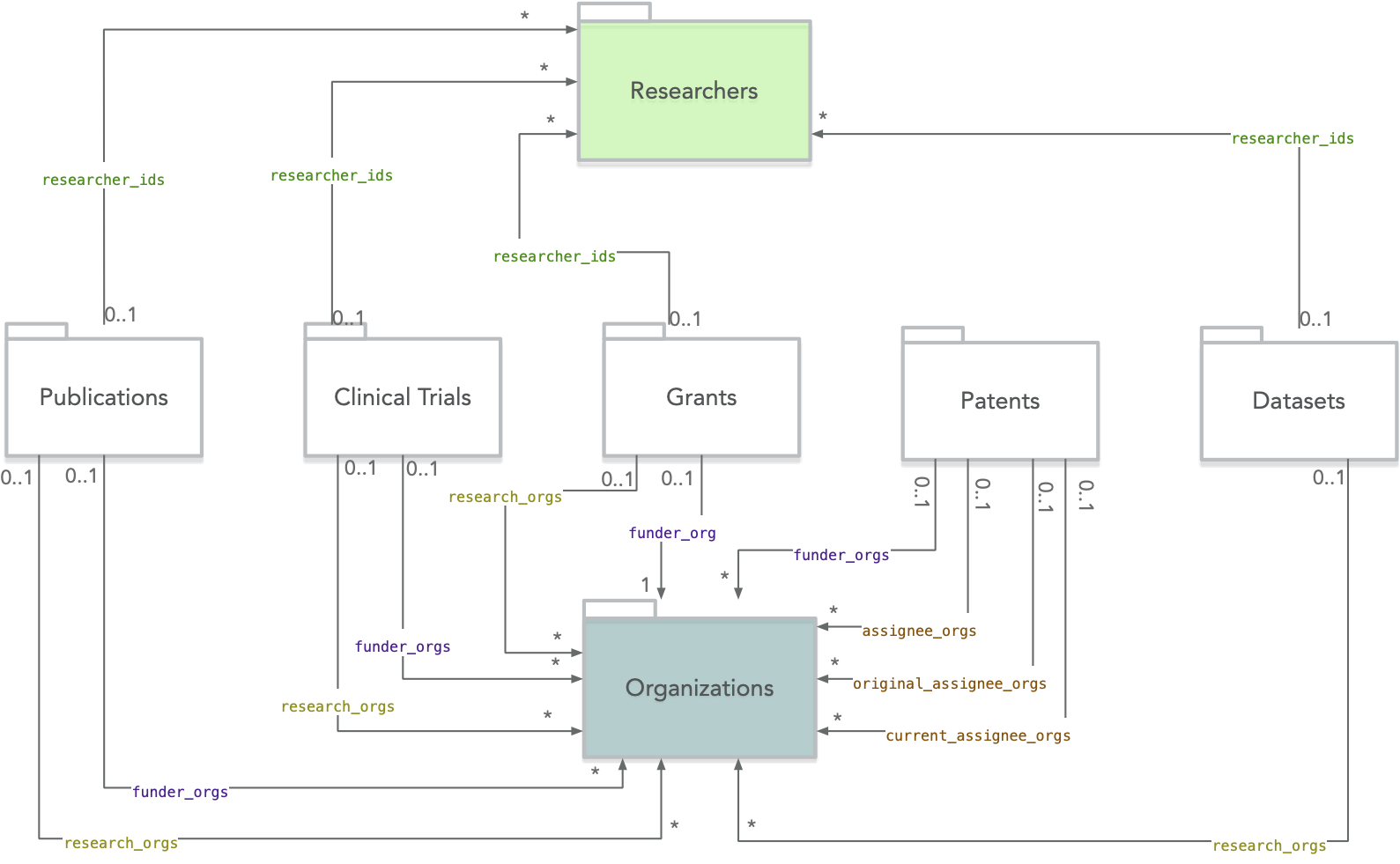Data Source Tables¶
Within the Dimensions BigQuery project dimensions-ai, the primary dataset called data_analytics contains a listing of tables,
each table holds a specific entity type (such as publications, grants, datasets etc). These independent tables directly map onto the
data types available from within the Dimensions web application. The schema/layout of these tables closely mirror as much as possible the data available
from the Dimensions web application and from the Dimensions DSL API.
Each table can hold cross-references to entities contained within other tables (such as publications to grants) or even references within the same table (i.e. citations/references for publications).
The tables available, depending on your subscription type, are detailed in the following links:
Update frequency¶
The frequency of data source updates are as detailed:
Source |
Update Frequency |
|---|---|
Daily incremental updates. New base set releases 2-4 time per year. |
|
Monthly, full base set releases. |
|
Daily incremental updates. New base set releases 2-4 time per year. |
|
Daily incremental updates. New base set releases 1-2 time per year. |
|
Weekly incremental updates. New base set releases 1-2 time per year. |
|
Daily incremental updates. |
|
Daily incremental updates. |
|
As necessary, with releases of new versions of our organizations data source. |
Table partitions¶
The data source detail pages include information about which fields are used for partitioning and clustering. This information is extremely useful for creating more efficient queries (in both performance and cost considerations).
For BigQuery tables it is possible to increase the efficiency and reduce the cost of queries by partitioning the data. For each table, it is possible to nominate a specific column on which data is grouped around and then partitioned on. The cost of queries, if filtered on this partitioning field, can be drastically reduced if the query utilises the partitioning field within filtering ‘WHERE’ statements.
Taking the publications data source table as an example, we partition on the year column. When performing a query, if we apply a filter to reduce the year of publication down to within the range 2010-2015 the cost of the query would reduce by approximately 70%. This is because BigQuery will only need to access the data present within the partitions 2010, 2011, 2012, 2013, 2014 and 2015 as opposed to accessing and reading data over the entire table (ie. all year ranges).
The documentation we provide for each data source lists all of the fields which are available and the type of data contained within the fields. On these pages we mark the column which is the primary partitioning key. We also indicate which fields which are used for clustering.
Google provides an excellent introduction to partitioned tables here: Introduction to partitioned tables.
See also
If you are using Google BI Engine, see also the FAQ Partitioning and Google BI Engine.
Cross type links overview¶
The figure below provides an overview of the main document sources and their respective cross links.

The figure below provides an overview of the main relationships between document sources and researchers / organizations.
